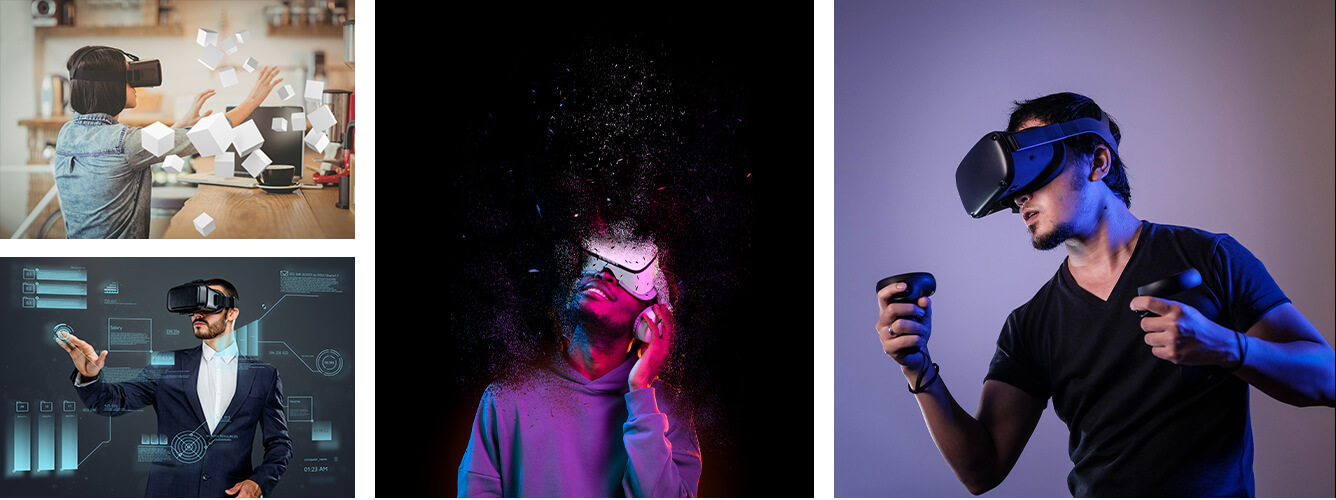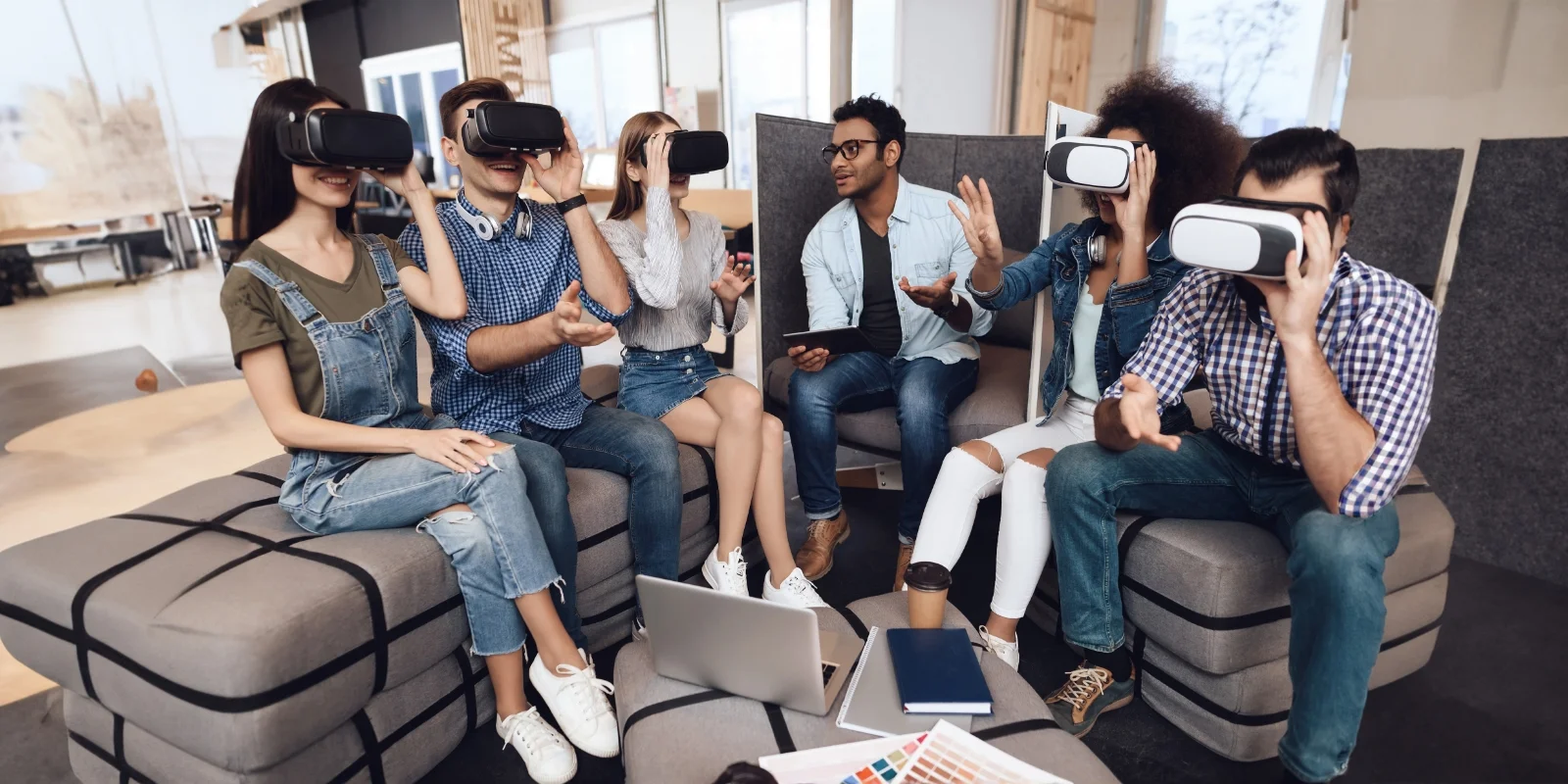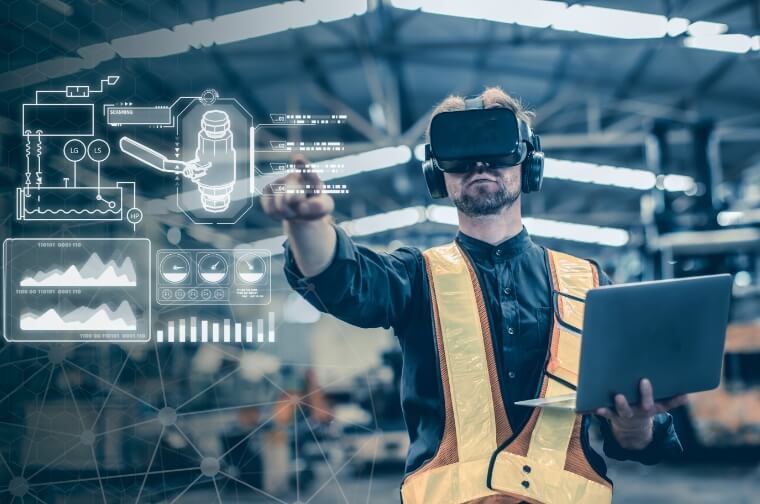Machine Learning and AI for revolution of Tech Companies are changing and streamlining businesses.
Virtual Reality is the future of technology with widespread applications. In simple terms, it is an immersive, simulated, real-life visual experience which utilizes a 3D environment so that the user can interact and explore the computer-generated world. It uses electronic devices such as a Virtual Reality headset or helmet to make the user feel that the objects in his or her vision is real.
Types of virtual reality:
They are mainly: non-immersive- where the user is still in control of the physical environment, semi-immersive- which provides a partially virtual environment, and fully-immersive simulations- which is the most realistic with the entire sound and sight package.
Applications of VR
The first VR head-mounted display in history emerged in the 1960s called the Sensorama by Morton Heilig which gave a bike ride digital experience on the Brooklyn streets. Jaron Lanier, founder of the Visual Programming Lab coined the term ‘Virtual Reality’.
Since then, VR has expanded its horizons to find usage in varying industries such as entertainment for immersive games, medical- for pain management and treatment of PTSD, advertising and even the military to simulate training situations for soldiers.
Advantages
It creates a realistic world, enables exploring places, makes education easier, can be used for corporate trainings and business marketing. Examples- Try before you buy such as Lacoste shoe trials and Volvo test drives.

How does VR work?
The working of Virtual Reality depends on its VR headsets, a set of controllers and other components as extrapolated below:
- Technology: The devices use the computer vision technology to interpret videos and images using the surrounding visuals and location, such as those used in computing devices and mobile phones. Cameras utilize blob and edge detection or a combination of scale and template matching to make the user visualize the environment. Along with advanced cameras, high-end technologies such as Big Data, Artificial Intelligence and processing units are also used. It does not always require the internet but you need to be online to set up the VR headset, update the system or play games.
- Lenses:Different elements and devices serve important purposes such as the VR headset which puts a screen in front of the eyes of the user which blocks the connect with the real world and makes the experience more immersive. The screen and each eye are separated with an autofocus lens which are adjusted according to the eye positioning and movements which aids in movement tracking with respect to the display. These devices are connected to a CPU or mobile unit which transmit the visuals to the eyes via the headset lenses. The lenses play an important role as they convert the image from the flat screen into a 3D picture which is based on the type and angle of lenses within the headset. These lenses merge the two individual images into the perfect shape for our eyes to perceive it like the actual world. In reality, one can see the objects moving back and forth upon closing an eye. This makes the 3D experience more realistic and multi-dimensional.
- 6DOF: A sensory system – 6DOF or also known as six degrees of freedom enables the process of head tracking in VR headsets which have embedded sensors in them. This technique plots one’s head in an XYZ plane and analyses the varied possible head movements. Accelerometers, gyroscopes and magnetometers are the sensors which make 6DOF effective.
- Audio-system: Along with VR hardware and software devices, the audio system also becomes an essential aspect where integrated headphones are used to provide positional audio which provides a multi-dimensional sound effect by also blocking the outside noise.
- Types of VR Headsets: The computer can be connected to the headset using an HDMI cable but latest technology has eliminated the need for connecting cables such as in VR gaming arenas. Thus, there are tethered and wireless options today with both cheap- Google carboard and expensive options. Playstation VR, HTC Vive and Oculus Rift are the most common personal computer based options whereas Samsung Gear VR and Google Cardboard both work by utilizing a smartphone. Oculus Go and the Daydream headset are the Standalone VR options which means that only a headset is required and no additional computer or mobile phone is needed.
Other components
A number of components are involved in improving the visual quality and upgradation of technology such as frame rate, screen refresh rate and field on view. The FOV or field of view is the extent of area which can be seen by the user. A human’s normal visual angle is around 220° and the display supports movement of the eyes and head up to this natural degree. Thus, the feeding of accurate information becomes important as an incorrect FOV can cause dizziness. The impressive aspect is that it allows you to feel and look around 360 degrees which is possible due to a combination of sensors and software.
The speed of displaying the images depends on the screen refresh rate whereas the rate at which the GPU processes images per second is called the frame rate. Minimum latency or lag is desirable depending on the refresh rate such that the visuals seem real with changes in the head movements. Thus, all these components balanced together create a near-perfect VR experience. A field of view of around 200, frame rate of 90 fps, a refresh rate of 90 Hz and maximum lag of 10 milliseconds provides the best virtual reality environment with minimum disorientation, nausea and side effects.
Conclusion
Virtual reality has been projected to be the technology with the highest growth potential in the coming years. Getting into VR is definitely worth it. Almost all countries are devising a VR and AR technology and investment in it is predicted to multiply with the global virtual reality market reaching $34 billion by 2023. VR has varied applications and now, Metaverse is no longer just fiction, thanks to VR.









